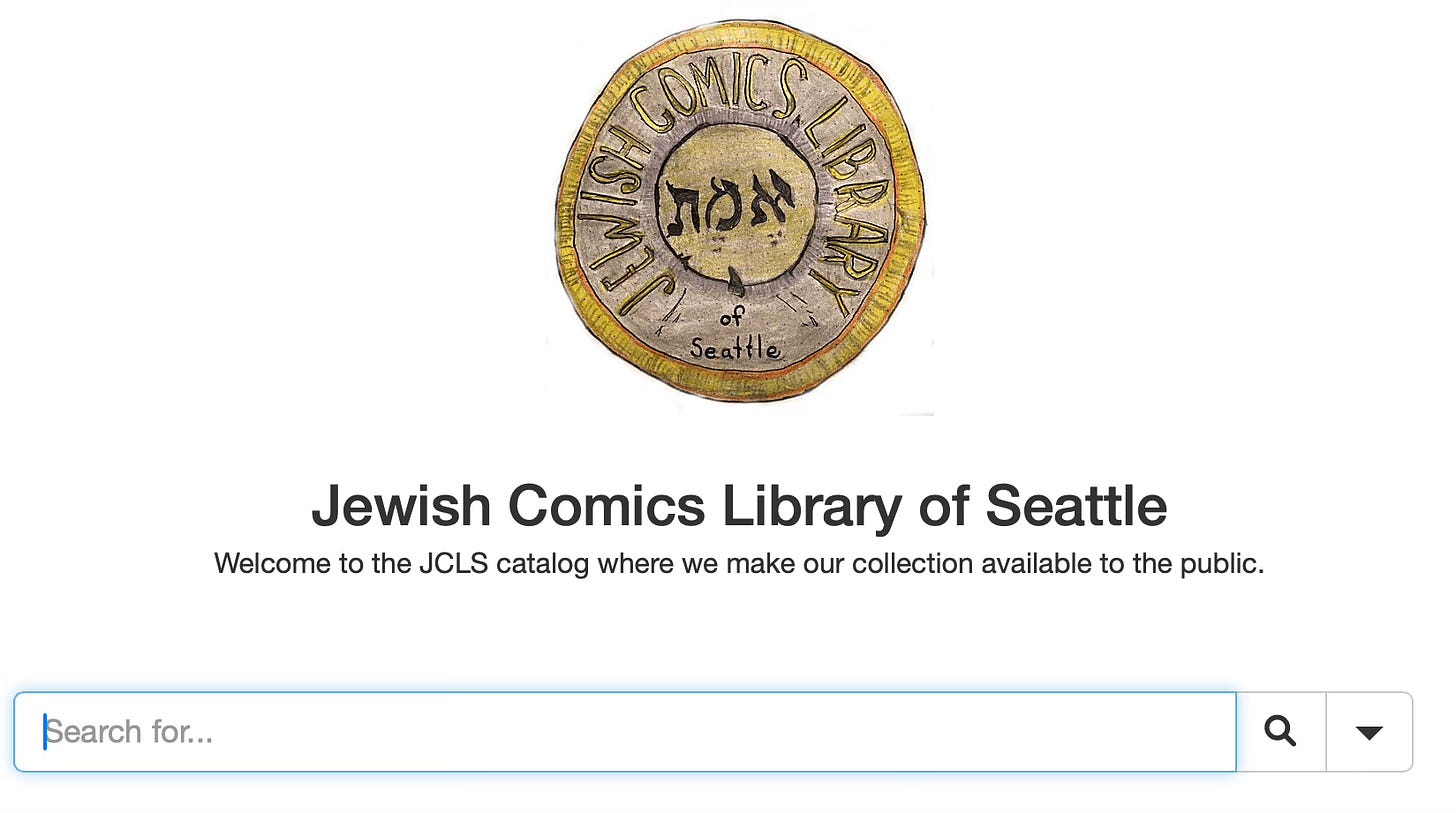I usually time these newsletter posts for the weeks when JCLS pops up at the Couth Buzzard Bookstore, but there has been a slight pattern shift this month. Pop ups happen on the 2nd and 4th Friday of the month but the pattern shifted so that it didn’t happen last week; one of my other projects took precedence. So, it’s a good time to pause, reflect and deliver some news.
My involvement with this topic — comics, graphic novels, literacy, and Jewish identity — is relatively recent. I wasn’t an avid comic book reader as a kid, other than MAD magazine, and I had a sporadic interest in underground comics, but it wasn’t until I started filling my middle school library with graphic novels that I took it at all seriously.
Now that I’m knee deep in it, I’ve come to recognize some themes and trends. There has been a distinct, long-term shift in focus from the traditional comics industry to the world of graphic novels. The comics industry has long been deadline-driven, built around production teams assigned to ongoing titles that appear serially, issue by issue. While some graphic novels are created with similar production methods, the form lends itself much more to the vision of an auteur. Many graphic novels are the work of a single creator, who often takes on writing, art, and sometimes even lettering and design. And more and more artists and writers are working in this genre. JCLS wants to support and encourage the trend.
Although I believe there is tremendous artistic value, even in the pulpiest of comics, the graphic novel is more likely to cross over into the realm of "serious" literature. It invites a different kind of critical reception and engages a broader literary audience, often blurring the line between visual storytelling and literary art. This has lead to my most recent revelation about the whole graphic literature genre phenomenon, that the same conclusions I came to when engaging reluctant and second language learning middle school students apply to mature adults.
That brings me around to the idea of promoting graphic novels for their ability to increase public literacy. I have learned from JCLS patrons that reading graphic literature presents a relief from doom scrolling on phones. Visual interest combined with nuanced story telling isn’t just for kids. It engages the mind in a different way than just text. More and more adults are finding this out for themselves, especially if they interact with younger readers and their reading.
All this to say that our mission has been on target and has grown. And we are still a unique entity.
The News
I’ve decided to turn on the paid subscription feature to this Substack. My other one, Son of the Wicked Child, will remain free. It seems like a big move but I’ve found some good reasons for doing so. Since the Jewish Comics Library of Seattle is a non-profit and I haven’t put in any personal money and I don’t take or plan to take a salary, it needs a way to produce revenue just to function, even with the lowest overhead possible. And books are not cheap. We have received small grants from family foundations dedicated to culture and education and we have patrons who have paid a $36/year membership fee to check out books at our pop up library. But paid Substack subscriptions would be a welcome revenue stream so that we can continue doing what we’ve been doing.
We currently have well over a hundred subscribers and free subscriptions are still very welcome. We have several hundred “followers” on Substack. The paid subscription feature just provides another option for anyone who feels generous, finds our mission worthy and would like to support our work. If you’ve been a free subscriber you should not feel obligated to switch to a paid subscription, I want to keep it accessible to all, and just your presence as a subscriber helps with grant proposals since funders generally want to know who benefits from our project. But if you happen to have some loose change and the spirit moves you, there’s a button below.






